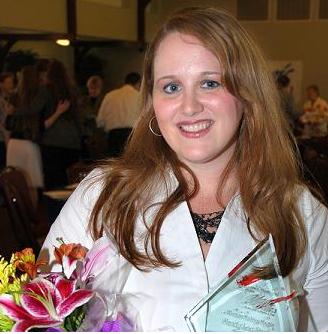A Really Big Rant: E-mail Courtesy
| Catch Your Limit | Written by: Mandy Lou Stark

I was in the mood to write a sweet blog today about our “hidden talents” and how to hone in on what we’re good at and not worry so much about what we’re not good at.
However, a pet peeve of mine has been festering, and I reached my boiling point today. I’m going to let it out and save my fluffy blog for another time.
It is normal to have pet peeves in business such as: “I hate when my cubicle neighbor routinely cuts his or her toenails on work time,” “my boss still calls twitter ‘tweeter,’” and “I was almost run over by my maniacal coworker in the parking garage – again.”
Everybody is entitled to be annoyed by things in the office considering we spend a huge portion of our lives there.
But my concern is one that very few folks in business do not seem to have a grasp on – the e-mail carbon copy function.
Electronic mail actually predates the inception of the Internet and was in use by the early 1970s. Most people have been using e-mail for business and personal matters since the mid 1990s, meaning an average person could have sent possibly hundreds of thousands of e-mails over the years. That’s a long time to catch on to some basic principles of what to do and what not to do when it comes to e-mail.
I’ll get to the point. Carbon copying (abbreviated as cc or c.c.) in an e-mail goes to two or more people whom the author wants to publicly include in a message. Usually the main person you’re writing to is listed in the “to” category and secondary recipients are listed in the “cc” category. Ok, that’s pretty simple.
Carbon copying others makes sense when writing to an entire department, a team or a family – groups of people who logically would be included in the message.
Here’s where carbon copying can go awry:
Coworkers use e-mail to ask each other questions, share ideas and problem solve. In these cases, the e-mails tend to be informal in nature and not meant to be seen by an outside party – especially a boss or supervisor. There is usually a big difference between the types of e-mails that are sent among the ranks and that are sent to executives.
If you are bouncing ideas off your coworker, don’t start to carbon copy the boss mid-conversation – especially without letting the other person know. From my experience, higher ups prefer to see the final result and unless they specifically ask to be included in the planning phases of a project, don’t bore them with things they probably don’t want to know.
And here’s something else to think about – this could be perceived as a violation of trust and privacy. There’s times when I wonder if people use e-mail carbon copying as a weapon to make other people look silly or expose an error or a mistake to a boss or another person.
If this did happen to me, I know my cheeks would turn red as I imagined my boss opening the e-mail wondering why they were included in such mundane details and why the person felt it necessary to get them involved. I’d feel like I just got told on to my teacher.
Another example of a huge no-no in my book is using carbon copying for personal gain. As innocent as this sounds, it is not a way to make brownie points. I know of somebody who was doing some research about services and sent out a few feeler e-mails to get information. One of the e-mails that person received back included not only the information they requested, but a strategically placed carbon copy to a VIP.
Think of an e-mail almost like a phone call. If your coworker asked you a quick question, would you ask them to wait a second while you conferenced in their boss? If you called a vendor, would you think it was strange if they wanted you to put the director of the company on the line too? What a way to make somebody feel insignificant or incompetent!
I know we all make mistakes and clearly think what we’re doing at any given moment is appropriate and the right thing to do. E-mail is quick and dirty, but it requires more than just being able to hit send. It takes a few minutes of strategizing to really determine what you’re saying and to whom you’re saying it.
For such an easy-to-come by and practically free tool – e-mail is more powerful than we could ever imagine in relaying our image, our message our motives and our credibility.
“There are four ways, and only four ways, in which we have contact with the world. We are evaluated and classified by these four contacts: what we do, how we look, what we say, and how we say it.” ~ Dale Carnegie (1888-1955)
